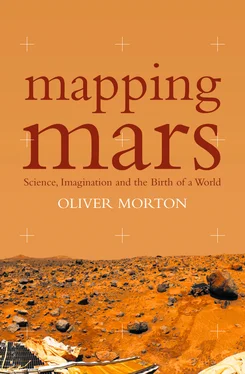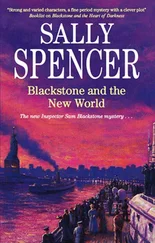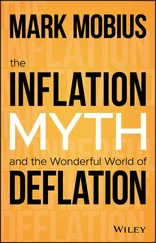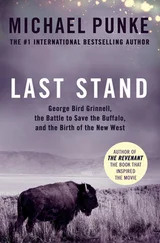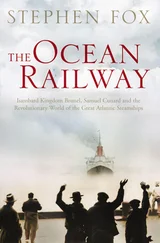And there was yet more for Masursky and Murray and their colleagues to wonder at and argue over. Strange parallel ridges and lineations running in step for hundreds of kilometres. The collapsed chaos features seen by Mariner 6, which now appeared to be sources for some of the great channels. Rippling bright clouds of solid carbon dioxide (such clouds, streaming off the heights of Olympus Mons, provided the intermittent bright white expanses that made Schiaparelli think of snow and call the area Nix Olympica). Most strikingly, there were regions at the poles where the interaction of wind-borne dust and expanding and contracting polar caps had built up a weird, laminated terrain. Each layer must correspond to a different set of conditions – different wind patterns, different climates. Millions, maybe billions of years of history were there in those layers, just waiting to be read if only you could get to them and figure out what made them. Murray, in particular, found these polar layered terrains fascinating. Thirty years on he still does. He was to be part of the science team on the ill-fated Scott and Amundsen microprobes that accompanied Mars Polar Lander.
The twenty-four people working shifts on the television team had more than enough data to keep them happy. Every twelve hours a new swathe of pictures would come back, covering the planet in seventeen days. There were always new things to see, new things to think about, new things to ask for close-ups of at the next opportunity. And in the end Mars’s rocky surface was stored in their computers and tacked up on their walls, almost seven gigabytes of data, 7329 images. Mars was now much more than one of Tennyson’s points of peaceful light – it was taking on, in Auden’s words, ‘the certainty that constitutes a thing’. It could be measured in detail, and properly mapped.
* The excellent Australian film The Dish goes some way to redressing this oversight.
How wonderful a good map is, in which one views the world as from another world thanks to the art of drawing.
Samuel van Hoogstraten, Inleyding tot de Hooge Schoole der Schilderkonst
(translated in Svetlana Alpers, The Art of Describing)
In 1959 Patricia Bridges, a gifted illustrator with a degree in fine arts, started making maps of the moon for me Air Force Chart and Information Center in St Louis. Her technique soon established ACIC as a better moon-mapping outfit than its great rival, the Army Map Service. But St Louis was not a particularly good place from which to see the moon and, though mapping from photographs was possible, direct observation was better. The ever-changing smearing of the atmosphere made it almost impossible for 1960s cameras to capture the moments of clarity in which the moon’s features are best seen – but the well-trained human eye could seize such brief impressions, understand what was seen in them and remember it. Through a good telescope eyes as keen as Bridges’s could gauge lunar details as little as 200 metres across, more than twice as acute as the resolution in photographs.
The mappers wanted that clarity and so they needed regular access to a good telescope. The twenty-four-inch telescope that Percival Lowell had built in Flagstaff with which to look at Mars was one of the best available, benefiting from high altitude, clean skies and clear nights. So the Air Force moon mappers moved to the Lowell Observatory, settling in permanently in 1961. They were based in a small cabin – previously a machine shop and lumber store – just a hundred metres or so from the observatory’s dome. By observing the same features lit from different angles on the waxing and waning moon, Bridges was able to get a sense of the features’ forms that a single photograph could never give. Sometimes she would sit there working on her maps night after night until the seeing was just so, at which point a colleague inside the dome would call her on the telephone and she would bundle up in her coat and run over to the telescope to capture some new detail of her subject.
In the mid-1960s, with the Apollo programme a national priority, the Flagstaff operation blossomed. More than half a dozen cartographers were trained in Bridges’s technique for lunar shaded-relief mapping. Shaded relief is a way of using heavier tones to suggest the shadows of hills and ridges on a map, giving the eye a sense of the third dimension. There are plenty of ways of doing the shading – with pencils, with paint, with chalks, even through a rather cumbersome system of embossing the relief on to plastic sheets and then photographing them lit from the side. But for the most part these are used to add shading to maps in which the relief is already clearly known through surveying, maps on which the topography is already defined by contours.
For the moon mappers the shadows with which they defined the landscape’s features were not an evocative extra to ease interpretation or please the eye. They were the essence of the map, the ultimate expression of the surface’s form. As such they needed to be rendered with minute fidelity, and the tool of choice was the airbrush, capable of capturing both the finest details – which is why people who retouched photographs relied on it in the days before Photoshop and similar software – and producing precisely graded washes, which was what commercial artists liked about it. There are other ways of producing maps of the planets: using Mariner 9 pictures and Mert Davies’s control net, a British astronomical artist called Charles Cross did a very pretty and accurate set of maps using pencil and charcoal. These were used to make the first ever comprehensive atlas of Mars, with text by Britain’s leading populariser of astronomy, Patrick Moore. Cross’s work was fine; but compare it with the far greater precision of Bridges’s moon work and you see immediately why, when the USGS started planning the production of official maps of Mars, the airbrush technique would have been the obvious one to use even if its leading proponents had not been located in the same town as the USGS astrogeology branch. Ray Batson, the USGS cartographer whom Masursky had chosen to run the map-making team, made recruiting Bridges, who had left the Air Force mappers in 1968 but still lived in Flagstaff, one of his first priorities.
Another recruit from the Lowell team was Jay Inge. Inge had been a keen stargazer from boyhood on, but bit off more than he could chew, mathematically, when he enrolled for physics and astronomy at the University of California, Los Angeles in the 1960s. After the first semester he was ‘casting around for things to do’ and ended up taking a degree in bio-medical illustration. Then he heard from a friend – one of his childhood telescope buddies – about what was going on at the Lowell Observatory. The moon mappers needed his illustrating skills and they offered a way back into stargazing. So Inge joined the team at Lowell.
Inge augmented the techniques Bridges had developed in various subtle ways. One particular gift he brought was a dexterous use of the powered eraser, not to get rid of errors – ‘an eraser is never used to rescue a poor drawing,’ he wrote sternly in a manual on shaded relief mapping – but as a technique for highlighting things. This was, in a way, an adaptation to the airbrush of the ‘dark plate’ map-making technique that was then sometimes used for charts of the ocean floor; dark plates double illustrators’ options by allowing them to both add and subtract from what was on the page to begin with. By taking ink away from the airbrushed original with a trusty K&E Motoraser, the illustrator could clarify and accentuate fine details, especially in the more deeply shaded parts of the maps.
By the time they made a start on the Mariner 9 images Bridges and Inge were highly accomplished, and the techniques they had developed for the moon were being taken up elsewhere. Inge had a fair amount of experience with Mars, too; while at Lowell he compiled telescope observations into a number of ‘albedo’ maps that showed the light and dark markings familiar for centuries (albedo is an astronomical term for the brightness with which an object reflects sunlight). But the spacecraft data offered new challenges. The television images from Mariner 9 were far better than any previous pictures of Mars, but they were very poor compared with the best images of the moon seen from the earth. (Even those observations were not as good as the pictures taken by the high-resolution camera designed for national security work that flew on board the Lunar Orbiter missions, which in the late 1960s overtook airbrush work as the state of the art for lunar mapping.) And with Mars there was no running up to the telescope in the middle of the night to get a better look. It wasn’t all the spacecraft’s fault: Mars was not a terribly good photographic subject. Its surface was pretty uniformly dark, and even after the great storm of 1971 had died down the atmosphere carried a residual obscuring burden of dust, not to mention occasional clouds.
Читать дальше
